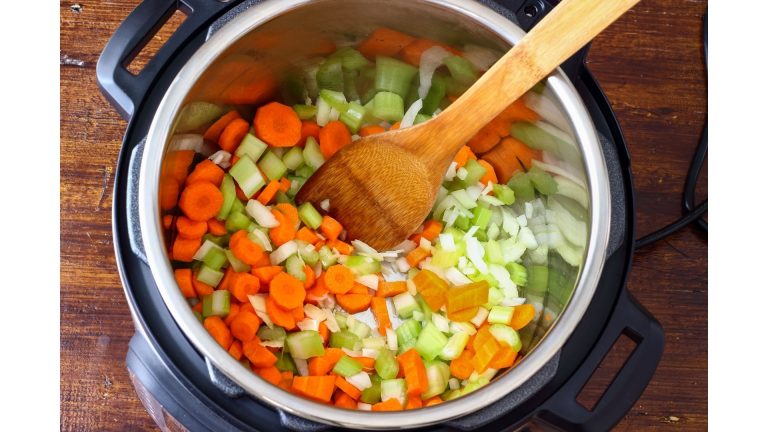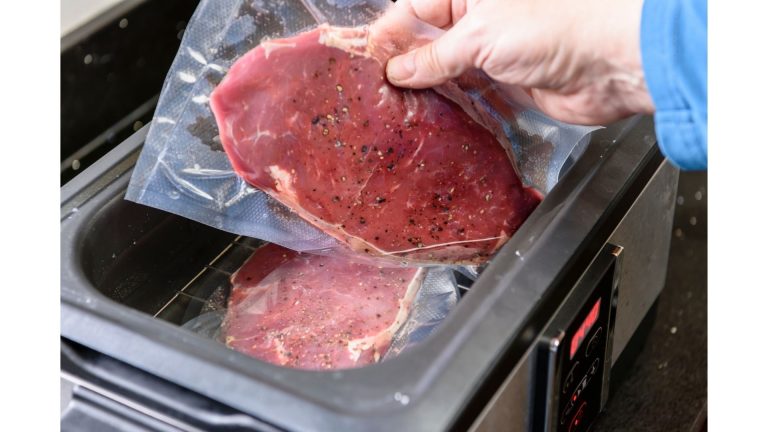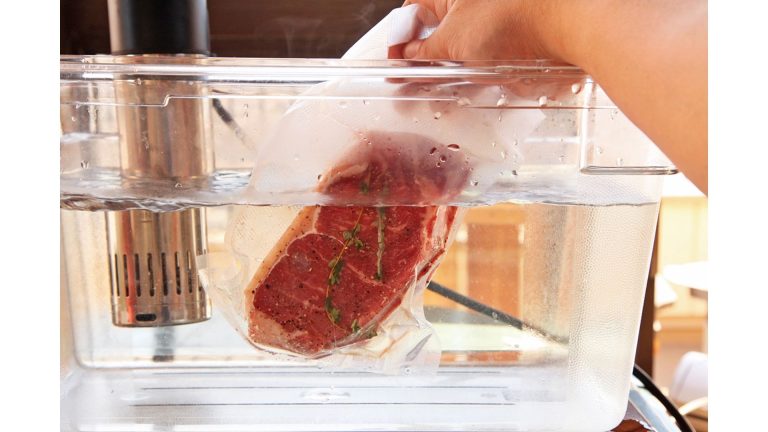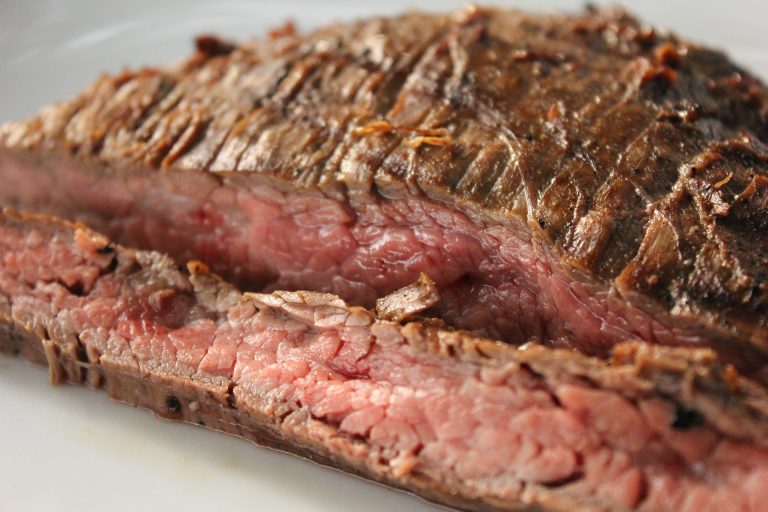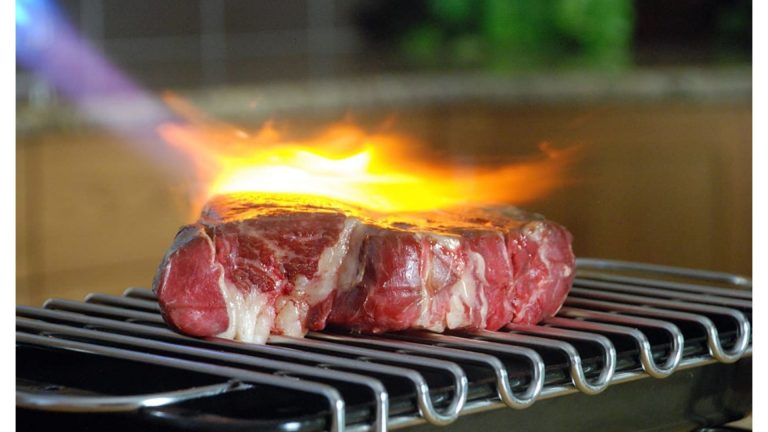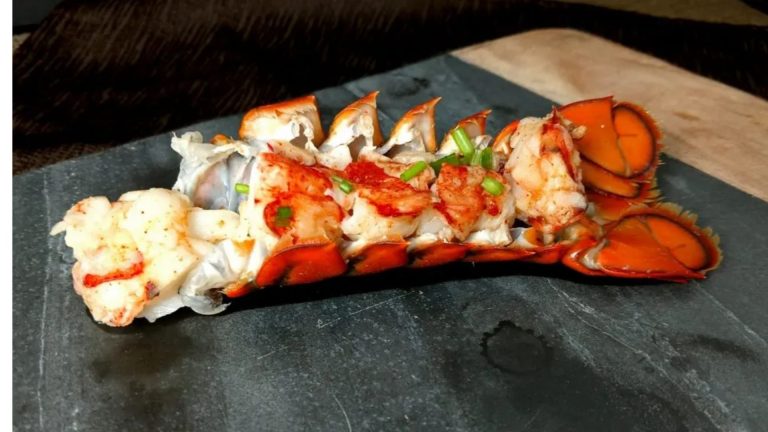How to Use Sous Vide to Defrost Food?
To thaw food, the Sous Vide technique works. The frozen food may be placed in the Sous Vide machine, and the water temperature can be regulated to around 140 degrees F. (60 degrees C).
That’s where it’ll stay as long as it’s turned on, too. The food may now be stored in the fridge or freezer once it has thawed out entirely.
Table of Contents
Proper Temperature for Defrosting Food with Sous Vide
This temperature is ideal for defrosting frozen foods. The food’s inside will thaw, but the food’s outside will remain frozen if kept at this temperature.
There is a common understanding that foods should be chilled to 41F (5C) or lower for defrosting. In order to preserve the texture of food, it is best to re-freeze food after defrosting it.
Sub-zero temperatures are used in the defrosting process for several reasons
Sous vide is a popular technique to prepare food quickly and precisely, but why would you want to thaw your food in this manner instead of the traditional one?
Using a microwave to quickly thaw frozen meat is faster and safer than using hot water to thaw meat. As an alternative to utilizing hot water, sous vide defrosting meat gives a precise temperature for safety and efficiency.
Is It Possible to Thaw Food in a Sous Vide?
Yes. To thaw frozen food rapidly, place it in a bowl of hot water or steam for about ten minutes at a time. The water should be approximately 140 degrees Fahrenheit (60C).
Using a sous-vide circulator, you may easily thaw frozen food in the water bath. Remove the frozen items from the sous vide circulator and place them in a container or freezer bag to thaw.
Reasons to Defrost Using Sous Vide
You can defrost sous vide for several reasons.
1. Using sous vide to thaw meat or veggies ensures that they are cooked to perfection. So you may avoid worrying about food spoilage by deciding when it’s done and when it’s ready.
2. The second benefit of sous vide cooking is that it can swiftly tenderize harder portions of meat, such as steak, thanks to the combination of high pressure and precise temperature control.
3. Using the sous vide defrosting process aids digestion by breaking down protein.
4. Sous vide cooking is particularly ideal for the home cook since it eliminates the danger of cross-contamination and gives a safe alternative to frying.
5. This method of defrosting several items is the most efficient. This method saves water and electricity, so you can defrost more while using less of both.
Even in a refrigerator, temperatures can fluctuate by several degrees. Because of this, thawing frozen meals takes a long time and is less predictable. It’s easier to defrost food in a sous vide cooker since you can set it to the exact temperature it needs without cooking.
Can I Cook Frozen Food With Sous Vide?
As long as the food is securely packed, there’s no need to thaw it before using a sous vide cooker to cook.
Frozen food should be sous vided for 50 percent longer than normal cooking time. This means that if you sous vide cook a non-frozen steak for 60 minutes, you should do the same for a frozen steak, which will take 90 minutes to cook.
The thawing and cooking of frozen meals may be sped up by starting your sous vide with hot tap water to speed things up. The standard amount of time for sous vide cooking is one hour and ten minutes.
See also: How to Cook Frozen Steak with Sous Vide
At home, sous vide cooking is a simple method of cooking food. However, if you want to thaw meat or any other frozen item, you can use it. Water should circulate around your meal at a temperature of around 38 degrees Fahrenheit.
Freezing fresh meat in a variety of methods is possible. Using heavy-duty plastic wrap and airtight seals is the quickest and simplest way to package the items for shipping.
Then, on the packages’ labels, note the date that you freeze it in the freezer… Place them on a dish or in the fridge to thaw. You can freeze them if they require additional time.
Conclusion
Finally, you may thaw a range of things with sous vide machine, including meat, fish, veggies, and even desserts.
To avoid drying out or overcooking your food, this is a great method to do it! It also allows you to cook at an exact temperature, which is difficult to do with conventional cooking methods.

Foodie and a passionate cook, I am here to share all of what I know about cooking, kitchen, and food prepping.
Follow me for delicious and healthy recipes.

